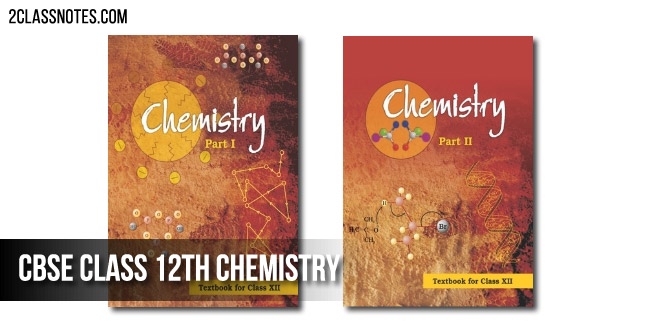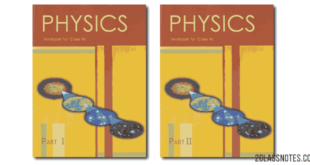CBSE Class 12th Chemistry Syllabus 2024-25: Download the CBSE Class 12th Chemistry Syllabus for the academic session 2024-25 here. Check out the complete syllabus to know the list of topics and exam pattern prescribed by CBSE for Class 12 Chemistry.
CBSE Class 12th Chemistry Syllabus 2024-25: The Central Board of Secondary Education (CBSE) Senior Secondary (Class 12) Chemistry syllabus has been released. Students can directly access the Class 12th Chemistry syllabus in this article. Students can check and download their CBSE Class 12 Chemistry revised syllabus and complete curriculum here. Along with the details of the course content, students can also check the question paper design, practical details, and evaluation scheme.
CBSE Class 12th Chemistry 2024-25 Course Structure
CBSE Class 12 Chemistry has ten units. The table below reflects the title along with the number of periods and mark allocation to the chapters. Refer the table below for more understanding:
| S.No. | Title | No. of Periods | Marks |
| 1. | Solutions | 10 | 7 |
| 2. | Electrochemistry | 12 | 9 |
| 3. | Chemical Kinetics | 10 | 7 |
| 4. | d – and f – Block Elements | 12 | 7 |
| 5. | Coordination Compounds | 12 | 7 |
| 6. | Haloalkanes and Haloarenes | 10 | 6 |
| 7. | Alcohols, Phenols and Ethers | 10 | 6 |
| 8. | Aldehydes, Ketones and Carboxylic Acids | 10 | 8 |
| 9. | Amines | 10 | 6 |
| 10. | Biomolecules | 12 | 7 |
| Total | 70 |
CBSE Class 12 Chemistry Syllabus for 2024-25
Unit 2: Solutions
Types of solutions, expression of concentration of solutions of solids in liquids, solubility of gases in
liquids, solid solutions, Raoult’s law, colligative properties – relative lowering of vapour pressure,
elevation of boiling point, depression of freezing point, osmotic pressure, determination of molecular
masses using colligative properties, abnormal molecular mass, Van’t Hoff factor.
Unit 3: Electrochemistry
Redox reactions, EMF of a cell, standard electrode potential, Nernst equation and its application to chemical cells, Relation between Gibbs energy change and EMF of a cell, conductance in electrolytic solutions, specific and molar conductivity, variations of conductivity with concentration, Kohlrausch’s Law, electrolysis and law of electrolysis (elementary idea), dry cell-electrolytic cells and Galvanic cells, lead accumulator, fuel cells, corrosion.
Unit 4: Chemical Kinetics
Rate of a reaction (Average and instantaneous), factors affecting rate of reaction: concentration, temperature, catalyst; order and molecularity of a reaction, rate law and specific rate constant, integrated rate equations and half-life (only for zero and first order reactions), concept of collision theory (elementary idea, no mathematical treatment), activation energy, Arrhenius equation.
Unit 8: d and f Block Elements
General introduction, electronic configuration, occurrence and characteristics of transition metals, general trends in properties of the first row transition metals – metallic character, ionization enthalpy, oxidation states, ionic radii, colour, catalytic property, magnetic properties, interstitial compounds, alloy formation, preparation and properties of K2Cr2O7 and KMnO4.
- Lanthanoids – Electronic configuration, oxidation states, chemical reactivity and lanthanoid contraction and its consequences.
- Actinoids – Electronic configuration, oxidation states and comparison with lanthanoids.
Unit 9: Coordination Compounds
Coordination compounds – Introduction, ligands, coordination number, colour, magnetic properties and shapes, IUPAC nomenclature of mononuclear coordination compounds. Bonding, Werner’s theory, VBT, and CFT; structure and stereoisomerism, importance of coordination compounds (in qualitative analysis, extraction of metals and biological system).
Unit 10: Haloalkanes and Haloarenes.
- Haloalkanes: Nomenclature, nature of C–X bond, physical and chemical properties, optical rotation mechanism of substitution reactions.
- Haloarenes: Nature of C–X bond, substitution reactions (Directive influence of halogen in monosubstituted compounds only). Uses and environmental effects of – dichloromethane, trichloromethane, tetrachloromethane, iodoform, freons, DDT.
Unit 11: Alcohols, Phenols and Ethers
- Alcohols: Nomenclature, methods of preparation, physical and chemical properties (of primary alcohols only), identification of primary, secondary and tertiary alcohols, mechanism of dehydration, uses with special reference to methanol and ethanol.
- Phenols: Nomenclature, methods of preparation, physical and chemical properties, acidic nature of phenol, electrophillic substitution reactions, uses of phenols.
- Ethers: Nomenclature, methods of preparation, physical and chemical properties, uses.
Unit 12: Aldehydes, Ketones and Carboxylic Acids
- Aldehydes and Ketones: Nomenclature, nature of carbonyl group, methods of preparation, physical and chemical properties, mechanism of nucleophilic addition, reactivity of alpha hydrogen in aldehydes, uses.
- Carboxylic Acids: Nomenclature, acidic nature, methods of preparation, physical and chemical properties; uses.
Unit 13: Amines
- Amines: Nomenclature, classification, structure, methods of preparation, physical and chemical properties, uses, identification of primary, secondary and tertiary amines.
- Diazonium salts: Preparation, chemical reactions and importance in synthetic organic chemistry.
Unit 14: Biomolecules
- Carbohydrates – Classification (aldoses and ketoses), monosaccahrides (glucose and fructose), D-L configuration oligosaccharides (sucrose, lactose, and maltose), polysaccharides (starch, cellulose, and glycogen); Importance of carbohydrates.
- Proteins – Elementary idea of – amino acids, peptide bond, polypeptides, proteins, structure of proteins – primary, secondary, tertiary structure and quaternary structures (qualitative idea only), denaturation of proteins; enzymes. Hormones – elementary idea excluding structure.
- Vitamins – Classification and functions.
- Nucleic Acids: DNA and RNA.
CBSE Class 12th Chemistry (043) Question Paper Design 2024-25
The CBSE Class 12 Chemistry question paper is weighted according to three criteria: Remembering and Understanding, Applying, and Analysing, Evaluating and Creating along with the marks and total percentage. 3 hours are allotted for the exam. The maximum possible score is 70 in theory. Check out the tabulated statistics below for a clearer understanding.
| S. No. | Domains | Total Marks | Percentage |
| 1. | Remembering and Understanding: Exhibit memory of previously learned material by recalling facts, terms, basic concepts, and answers. Demonstrate understanding of facts and ideas by organizing, comparing, translating, interpreting, giving descriptions and stating main ideas. | 28 | 40 |
| 2. | Applying: Solve problems to new situations by applying acquired knowledge, facts, techniques and rules in a different way. | 21 | 30 |
| 3. | Analysing, Evaluating and Creating: Examine and break information into parts by identifying motives or causes. Make inferences and find evidence to support generalizations. Present and defend opinions by making judgments about information, validity of ideas or quality of work based on a set of criteria. Compile information together in a different way by combining elements in a new pattern or proposing alternative solutions. | 21 | 30 |
- No chapter wise weightage. Care to be taken to cover all the chapters.
- Suitable internal variations may be made for generating various templates. Choice(s)
- There will be no overall choice in the question paper.
- However, 33% internal choices will be given in all the sections
Practical Evaluation Scheme for Class 12 Chemistry
The practical examination will be of a two hour duration with a mark allocation of 30 marks in total. Students can find below the evaluation scheme for the practical examination for better understanding:
| Evaluation Scheme for Examination | Marks |
| Volumetric Analysis | 08 marks |
| Salt Analysis | 08 marks |
| Content Based Experiment | 06 marks |
| Project Work | 04 marks |
| Class record and viva | 04 marks |
| Total | 30 marks |
Prescribed Books:
- Chemistry Part – I, Class 12, published by NCERT.
- Chemistry Part – II, Class 12, published by NCERT.
CBSE Class 12 Chemistry Syllabus 2024-25:
Here’s the direct link to download the CBSE class 12 Chemistry syllabus:
Download CBSE Class 12 Chemistry syllabus 2024-25 PDF
 Class Notes NCERT Solutions for CBSE Students
Class Notes NCERT Solutions for CBSE Students







